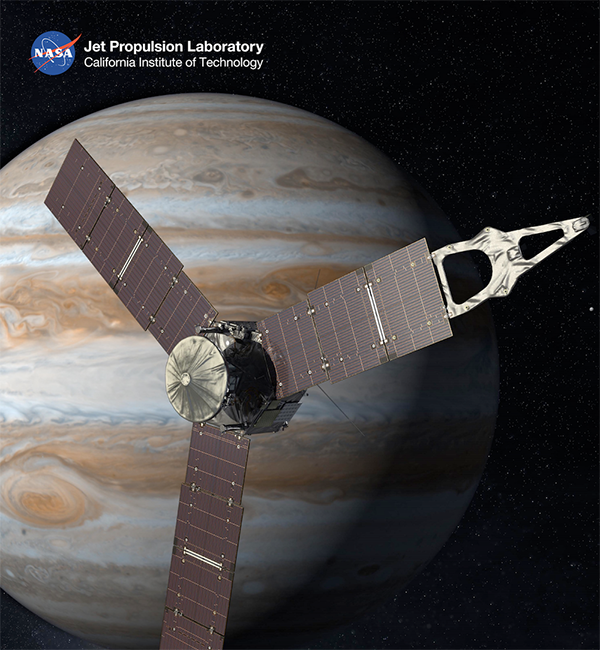In this series we are exploring NASA’s top five challenges as detailed in its Civil Space Shortfall Ranking, which is basically NASA’s Christmas wish list. These are the technologies that NASA believes we need to develop if we want to go to space…and stay there.
Coming in second place is nothing less thanmore power. Which is kind of obvious: we want bigger and faster computers, we want more powerful robotics, and we want more sophisticated navigation systems. All that is going to take a lot of juice.
What we have now just…isn’t going to cut it. Right now if you want power in space you essentially have two options: solar panels, and a kind of nuclear power called radioisotope thermoelectric generators.
Solar panels are exactly what you think of, because it’s very similar to what we have on the Earth. On the plus side, solar panels are relatively cheap to make and deploy, and contain no moving parts, which is always a bonus when it comes to space applications. There are major downsides, however. One, anything outside the Earth’s orbit is going to be tight on energy relying on solar panels, because…not a lot of sunlight. Also there’s no Sun in the shade, which I know is an incredibly obvious statement to make but matters if you’re, say, on the Moon and get plunged into darkness for two weeks at a time.
Even the International Space Station, which receives the same amount of sunlight as the Earth (because it’s in Earth orbit), has over 262,000 individual solar cells spanning over an acre – which is over 2,500 square meters for you metric folks that generates on average an impressive 84 to 120 kilowatts of electricity, which could power…a handful of typical homes.
Hm.
NASA’s Juno spacecraft currently holds the record for the most distant deployed solar panels in the system, orbiting around Jupiter at a distance of over 800 million kilometers. Its gigantic solar array could generate 14,000 watts of power on the Earth, but at the distance sunlight is so feeble it only managed a measly 500 watts of power…which could run a kitchen blender. You know, if you needed to make a smoothie at Jupiter. But Juno was able to turn that juice into the most detailed images ever taken of the storms and cloud-tops of the giant planet, and use slight variations and gravity and magnetic fields to give us a sense of what’s happening deep beneath the surface.
The alternative for deep-space missions is the RTG, or radioisotope thermoelectric generator. This device is essentially a chunk of radioactive material that decays. As it does it releases heat, which can be used to generate electricity. It’s like a nuclear battery. On the upside these thigs last basically forever, giving spacecraft decades of reliable power. But on the downside they don’t deliver a lot of power, they slowly lose power over time, and there’s the whole nuclear thing which makes some people a little twitchy.
But there’s thing. If we’re going to stay in space for the long haul, we have to get over the whole nuclear thing real quick. And that doesn’t mean more RTGs. That means full on nuclear power plants on lunar and Martian bases. Yes, you heard me right. Look, it’s not like we don’t know how to make relatively compact nuclear power plants: submarines and aircraft carriers around the world all carry their own little power plants. But those things are beyond heavy, which make them impractical to launch in a single mission, and nobody really likes the idea of trying to assemble one in Earth orbit.
So we have to get clever. We’re going to have to figure out how to make smaller, launchable fission power plants. And the most difficult challenge will be convincing the public that we can launch nuclear material into space and totally not have it blow up in the atmosphere, we promise. I mean, it’s kind a legit concern. It’s not like we’ll have a nuclear bomb going off or anything, but also nobody wants some rocket blowing up and rain radioactive material across a sizeable fraction of a continent. It’s not likely to happen, but there’s a possibility, and NASA and its partners will have its work cut out to convince the public that it’s a small enough risk, and a great enough reward.
In the meantime, while we’re figuring out all the bits and pieces that will make safe, efficient nuclear power in space a viable option, we have to up our game with solar panels. That’s really the only other power source we can rely on. It’s not like there are coal or oil deposits on the Moon or Mars. So we need more efficient solar panels, lighter solar panels, and the ability to deploy solar farms in sunlit areas and transmit that generated power to our bases and stations.
Those solar panels are going to have to be more durable than current ones, as they have to deal with micrometeorite impacts and the destruction caused by the Sun’s unfiltered UV radiation. Oh, and don’t forget the dust. The always-present, always-persistent dust that just gets…everywhere. The only reason that the Spirit and Opportunity rovers were able to go past their planned mission lifetimes was that random Martian dust devils would wipe the dust off their solar panels. And we can’t rely on dust devils as a long-term solution.

